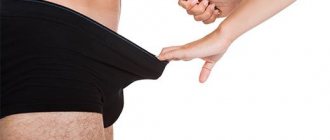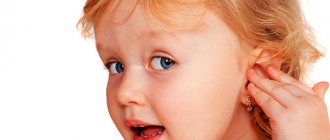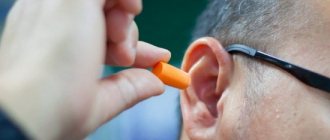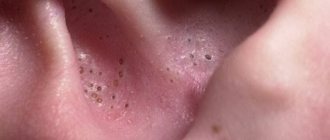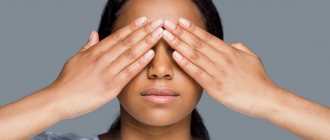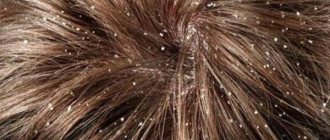- about the author
- VK profile
Svetlana Tarasova
Hairdresser-stylist with more than 8 years of experience, expert in the field of haircuts, styling, hair care, coloring.
Many people associate dandruff with problems with the skin under the scalp, but this is not entirely true. Seborrhea occurs on the eyebrows, ears, armpits, etc., because these areas are also covered with skin with sebaceous glands and small hair.
Causes of dandruff in the ears
The skin and sebaceous glands on the ears, secreting excess oil, provoke dandruff. The root of the problem is the fungus Pityrosporum. With increased oily skin, it begins to actively multiply. This fungus is always present in the natural microflora, but it is activated and affects the epidermis when the immune system is suppressed.
Provoking factors:
- insufficient or lack of ear hygiene;
- lack of vitamins and minerals in the diet;
- hormonal imbalance during pregnancy, menopause;
- metabolic disorders;
- hereditary predisposition;
- dry ears;
- previous otitis media or furunculosis;
- liver or digestive tract diseases;
- reaction to low-quality shampoo or soap.
Lack of hygiene is the main reason. In unwashed ears, the pores become clogged with oil, causing crusts to appear.
An unbalanced diet is the second reason. The appearance of dandruff is provoked by soda and fast foods, spicy, fatty and fried foods, large gaps between meals, vitamin deficiency, and dry snacks.
In addition, women are more susceptible to seborrhea due to frequent fluctuations in hormones.
Where to start treating a patient with complaints of itching in the ear?
First of all, it is necessary to find out whether the patient has skin lesions of the auditory canal associated with itching, since this is what will determine the direction of subsequent examination. In the absence of such, itching is considered a primary process without skin manifestations (spots, blisters).
Factors for itching in the ear:
- Skin diseases (dermatitis, psoriasis, eczema) that spread throughout the human body).
- Allergies (for example, to shampoo or shower gel, cosmetics, headphones, hearing aids, hats, earrings, metal glasses, etc.).
- Otitis externa, trauma to the skin of the auditory canal.
- Demodex mite - the surface of the head and neck that it damages also itches.
- When little sulfur is formed, the skin dries quickly and becomes easily infected. Conversely, if a lot of wax is formed in the ear canal, then wax plugs collect.
- Insects that crawl into the ear if you are in nature or just outside cause itching sensations.
- Infections (fungi, bacteria) - first there is itching, and then black or greenish discharge from the ear canal, which causes congestion.
When water gets into the ear canals, for example, during bathing, the itching sensation intensifies, since the moist environment in the ear leads to the hyperactivity of streptococci and fungi, which actively multiply in it.
It is not advisable to treat yourself, because the disease can be caused by various types of fungus and bacteria, which requires a differentiated approach to its treatment.
The fungus affects not only the outer ear, but sometimes also the eardrum; there is a feeling of stuffiness, pain, hearing loss, and noise.
When itching in the ears is caused by fungi (otomycosis), then the problem should be approached with all seriousness, since it is not so easy to treat them!!! Otomycosis is considered cured if repeated tests of the microflora of the ear discharge after a month show the absence of fungi.
- Psychogenic itching - treatment by a neurologist or psychotherapist.
- Itching is an important symptom in the early diagnosis of diabetes mellitus, as it indicates a violation of microcirculation and trophism in tissues. The cause of ear itching is the increased accumulation of toxins that the skin releases during illness.
- “Renal itching” is a consequence of chronic (but not acute) renal failure with impaired excretory function. The etiology of this type of itching is unclear, but it increases with deterioration of kidney function. This itching is paroxysmal in nature.
- In liver diseases, itching is of a cholestatic nature in a generalized form (the cause is stagnation of bile or blockage of the bile ducts).
To determine it, you need to take a biochemical blood test for alkaline phosphatase. At the same time, alanine aminotransferase, cholesterol, and bilirubin are usually also increased.
- Xerosis (“dry skin”) - occurs with hyposecretion of the sebaceous and sweat glands in the external auditory canal, manifested by a violation of the hydrolipid balance, a lack of amino acids in the stratum corneum of the skin, which leads to roughness of the skin in the ear, characterized by thin white peeling (for example, with hypothyroidism) .
- Metabolic disorders, hormonal imbalance, especially over the age of 60 years.
Laboratory tests that should be performed in a patient with itchy ear who does not have primary skin lesions:
- General clinical blood test with formula + sugar.
- Tank culture of ear discharge for flora and sensitivity to antibiotics, fungi.
- Blood chemistry.
- Kidney function tests - blood urea nitrogen level, creatinine, urinalysis.
Therefore, if you feel itching in your ear, which prevents you from living fully, you should immediately and without hesitation consult an otolaryngologist!!! Based on all your complaints, a thorough examination of the ear canal, laboratory tests, and culture of ear discharge, the doctor will make the correct diagnosis and prescribe the correct and effective treatment.
And before visiting the doctor, do not scratch your irritated skin, this can only worsen the disease!
Symptoms of the disease and what dandruff in the ears looks like
Translated from Latin, “dandruff” means “bran”. This is explained by the fact that the separated skin particles (exfoliated epidermal cells) are similar in appearance to them.
Medicine interprets the concept of dandruff as the acceleration of the exfoliation of small particles of skin. This phenomenon can occur anywhere there is hair.
Ear dandruff affects not only the auricle, but also the area behind the ears and the ear canal. Some patients, when faced with such flakes, believe that it is dandruff falling from the hair and continue to use their antiseborrheic shampoos.
Normally, the skin is renewed within about a month. If the secretion of the sebaceous glands is not enough or, conversely, too much, dandruff will appear in any case. If the process is accelerated, dermatocytes do not have time to mature, forming flakes on the surface of the skin.
Ear dandruff appears against the background of seborrhea of the head if it is not treated. Both phenomena are similar in origin. Dandruff is very similar to flaking of the skin, but the latter is never accompanied by itching and affects limited areas.
Whitish scales form over large areas; if they are removed (and they are difficult to separate), the skin underneath is always red and irritated.
Many people report discomfort due to dandruff in the ears. If it occurs after otitis media, it will be accompanied by hearing loss and congestion.
Dandruff can resemble yellowish sebaceous crusts - seborrheic dermatitis on the ears is always dry and greasy. At the same time, the plates of scales are denser, thicker and more pronounced. The scales themselves are covered with an oily film. Itching remains the main symptom of any type of seborrhea.
Itching in the ear is a very common reason for visiting an ENT doctor.
Anyone who has experienced a painful tickling sensation in the ear at least once in their life remembers this terrible condition. “This annoying itching inside the ear often bothers me, prevents me from concentrating on important things, causes irritability, brings serious inconvenience, and reduces the quality of life. We want to take an ear stick and scratch the inside of the ear,” patients complain.
“This is not dangerous, but it may be a harbinger of illness, which requires maximum attention!” I will say.
And when scratching with an ear stick, match or pin to quench the itching and remove wax, the discomfort does not go away, but only intensifies, accompanied by pain and distension. Sound familiar? And I’ll tell you, you absolutely can’t do that!!!
Itching in the ear is a normal reaction of the skin when harmful environmental factors (dust, smog, high/low temperatures, air humidity, swimming in chlorinated water, etc.) or substances formed in the auditory canal (secretion from the sulfur glands, sweat) act on nerve receptors in the dermis. Normally, this reaction is not permanent.
IMPORTANT! Stop cleaning your ears so hard! They clean themselves! Frequent washing of the ear canals disrupts the self-cleaning function.
Nature has provided everything, even the natural cleaning of the ears by moving wax (for example, when chewing).
How to remove dandruff from ears
Leaving dead particles of epidermis in the ears is, at a minimum, unhygienic, so you need to wash your ears and clean them in the morning and evening. In order not to injure the skin, hard scales and crusts are first softened. For this purpose, a cotton swab dipped in oil or herbal decoction is quite suitable. Any vegetable oil will do: olive, lean, burdock, corn.
A tampon with oil or decoction must be squeezed out thoroughly. It is laid for about 15 minutes - during this time the crusts will have time to soften. Next, it will only take a few minutes to clean your ears with cotton swabs. Afterwards the surface is cleaned with a napkin. It is advisable to repeat the procedure at least 3 times a day.
Important! It is necessary to remove dandruff carefully, and only with means prescribed by a doctor. Any soap, shampoo or cleanser can worsen the situation; it is better to forget about them during the treatment period.
What should you be afraid of with otomycosis?
Fungal external otitis tends to chronicize the process, forming a sluggish, constantly persistent process of fungal inflammation. In this case, an increase in symptoms is provoked either by antibiotic therapy or changes in diet: an abundance of “fast” sugars - when the mushrooms begin to grow “by leaps and bounds.”
A long-term fungal process leads to sensitization (allergization) of the body, decreased immunity, and the presence of itching often leads to scratching and the risk of secondary purulent infection.
What treatment is needed
Treatment of seborrhea begins with identifying the causes of its occurrence. Therapeutic methods involve working in 2 directions:
- Elimination of the traumatic cause - prescribing antifungal agents, eliminating other causative pathologies, for example, hormonal or endocrine disorders, changing lifestyle.
- Relief of symptoms.
The effectiveness of treatment is achieved by an integrated approach, which includes:
- strengthening immunity;
- change in diet;
- eliminating stress;
- local impact.
What to do if you suspect fungal otitis media?
First of all, immediately contact a specialized ENT clinic or ENT office. In Moscow, for example, at ENT clinic number 1, where an otorhinolaryngologist will conduct an endoscopic examination of the ear, to clarify the diagnosis, take discharge from the ear (smear) for fungi and prescribe complex therapy for this disease, which includes local therapy, general therapy and physical therapy.
One of the important elements of treatment is washing the ear canal with a medicinal solution in order to remove fungal mycelium and inflammatory discharge, after which ointment or drops that have a therapeutic effect are introduced onto the turunda, it is necessary for the medicine to act on the cleaned ear canal.
Red laser laser therapy is very effective for antifungal, anti-inflammatory and immune-modeling effects. The course of such treatment is 8-10 procedures.
After a course of complex therapy, it is recommended to give up the bad habit of “cleaning” your ears in order to allow earwax to protect you from such diseases in the future.
Traditional treatment
Dandruff does not threaten general health, but it does cause aesthetic discomfort to a person. Sometimes the patient tries to cover his ears with his hair, feeling inferior. In addition, the sight of affected ears evokes mixed feelings among ordinary people - they consider such a person to be contagious.
Of course, dandruff is not contagious, but it requires constant ear care. If there is insufficient hygiene, crusts mix with earwax, forming cerumen plugs. This may cause noise or hearing loss.
Traditional treatment involves the use of antifungal agents, the choice is huge:
- Tar-based - for example, Friederm, tar ointment, etc. They soften dead skin, destroy fungus, and also normalize the functioning of the sebaceous glands.
- Based on zinc and salicylic acid (paste and ointment) – perfectly destroy fungal infections.
- Antimycotics – Ketoconazole, Clotrimazole. They destroy the fungus by damaging its cell membrane. Perhotal cream or ointment - its active ingredient is Ketoconazole. Apply once a day to the affected area and surrounding area - approximately 2 cm around the crusts. Candibiotic ear drops - contain Clotrimazole for fungi and Levomycetin for bacteria. You can use it to treat the skin externally or moisten a tampon in it and place it in the ear canal (if the crusts are inside the ear).
- Preparations with selenium sulfide (for example, Sulsen) destroy fungus and normalize the rate of skin cell renewal. In the USA they abandoned it because it increases the oiliness of the skin (latest data).
- Products based on ciclopirox – very effective as they eliminate fungal microflora.
- Lotion Bifon – directly destroys the fungus Pityrosporum Ovale, which is the main cause of dandruff. Restores the lost balance of the scalp, relieves itching. The product contains the antifungal Bifonazole, also contains panthenol, which moisturizes the skin, and the anti-inflammatory component allantoin. Wipe the damaged epidermis with lotion 2-3 times a day.
Important! The use of antifungal agents is necessary to eliminate the cause of the disease, otherwise dandruff will return again and again.
But you must adhere to these rules:
- You need to wash your ears with plain water while taking a shower, rotating them in different directions and pulling them down and forward, while the earwax from the ear canal will move and come out.
- Hygiene of the ear canal - with the index finger of the hand, press on the walls of the ear canal from side to side and remove wax and dust, and then wipe dry with a towel.
“So why does the secretion of the sulfur glands cause itching sensations in the ear?”, you ask. After all, each of us has it! The reason here is daily ear hygiene with a cotton swab!!! Be aware that when you clean the ear canal from wax with such a stick, the skin of the ear canal loses its protection, is injured, and sulfur will certainly get into the microcracks, which will cause itching.
But the secretion of the sulfur glands performs important tasks: lubricates the skin of the external auditory canal, maintains its elasticity, cleanses, and also prevents bacteria, fungi, and small insects from entering the ear.
Improper ear hygiene is one of the most common causes of itching in the ear canal.
Diet and lifestyle correction
Proper nutrition plays a huge role in the treatment of seborrhea; it can normalize impaired secretion of the sebaceous glands. First of all, you should avoid eating fatty, sweet, salty, smoked and fried foods.
Fresh vegetables and fruits, fish, chicken, and cereals are recommended for consumption. Adequate water consumption is also important - 1.5 liters per day.
Multivitamin complexes are recommended - Vitrum, Duovit, Multi-Tabs, Supradin, Sanasol.
If prescribing medications is the prerogative of a doctor, then the patient can make the necessary changes in lifestyle independently:
- Increasing the body's defenses. Often it is suppressed immunity that becomes the trigger for the development of dandruff. To increase it, it is recommended to have proper rest, engage in feasible physical sports, and take daily walks in the fresh air.
- Avoiding stressful situations. To increase stress resistance, sedatives can be prescribed: tincture of motherwort and peony, valerian, Novopassit, Sedavit, etc. They are taken in courses according to the instructions.
Traditional methods
There are also traditional methods for treating dandruff at home. They are not harmful to health, since their composition is natural. But consultation with a doctor before use is required.
Traditional recipes:
- For treatment, various infusions are used: chamomile, nettle, calendula, rose hips, sea buckthorn, in which cotton pads are soaked. General recipe: 2 tbsp. dry herb or collection, pour a glass of boiling water and leave for 20 minutes. You can add a few drops of oil to the infusion. The entire surface of the ears is treated with the product 2 times a day.
- Oil tampons: roll thick turundas out of cotton wool and soak them in sunflower oil. The oil should be warm. You cannot wash it out of your ears with alcohol, vodka, soap or shampoo, only with a dry soft cloth.
- Wipe your ears with cotton wool soaked in novocaine 3 times a day. You need to repeat these steps for a week.
- Anti-dandruff mask: carefully grind one clove of garlic until smooth, add a pinch of soda and 5 ml of olive, corn or sunflower oil. Let the prepared mixture sit for 15 minutes and wipe your ears with it. The course of treatment with this remedy is 7 days.
Important! The effect of folk remedies has not been proven by medicine, therefore, the treatment of dandruff on the ears should include pharmaceutical preparations, carefully selected by a doctor for each specific patient.
Preventing dandruff in the ears
Prevention of seborrhea in the ears includes:
- compliance with personal hygiene standards;
- daily ear washing;
- correct alternation of work and rest;
- normalization of nutrition;
- timely treatment of boils and otitis media;
- minimizing stress;
- correct selection of shampoo and timely washing of hair;
- preventing dry scalp.
Important! After a course of treatment, dandruff does not disappear immediately. Fungi are always stubborn. Treatment must continue for at least a month before results can be seen. In some cases, therapy may take a year or more.
Dandruff in the ears is completely curable and you should not be afraid of it. But, as elsewhere, the timeliness of started therapy is important. The main thing is to identify the exact cause of its appearance, after which it will not be difficult for the doctor to prescribe adequate treatment.
- about the author
- VK profile
Precautionary measures
If you have just managed to get rid of the unfortunate crust in your ears, then you are still at risk. To prevent the disease from appearing again, follow the recommendations of experienced dermatologists:
- observe personal hygiene rules, do not use other people’s accessories (for example, headphones or earplugs) and wash your ears regularly;
- Otolaryngologists prohibit the use of cotton swabs to clean the ears, because they destroy epithelial cells and eliminate the protective lubricant formed in the ear canal;
- Spend more time outdoors and try to follow the generally accepted daily routine (it is advisable to sleep at least 8 hours);
- Under no circumstances should you overcool your ears during the cold season, so buy a hat;
- protect your ears from water, especially chlorinated water, getting into them (you should get a special swimming cap);
- if a person wears a hearing aid, it is necessary to regularly clean the device and use special ear drops;
- do not start treatment for otitis media and boils, otherwise it will be difficult to get rid of the crust in the auricle;
- drink still mineral water as much as possible , because it will help improve your metabolism;
- try to avoid stressful situations (you can improve your perception of the world around you by doing yoga or reading books on self-development and psychology);
- start eating a balanced diet (fruits, vegetables, herbs, cereals, meat and dairy products).
Important point! If dandruff in the ears is left untreated, acute mycosis may develop. The fungus acts not only locally, but also begins to penetrate deep into the tissues of the body.
To treat dandruff in the ears, you need to use an integrated approach - at the same time eliminate the cosmetic problem with the help of ointments, lotions and tablets, and also begin to lead a healthy lifestyle, eating foods rich in fiber and vitamins. Remember to drink at least 2.5 liters of water per day.
You should not think that the white grains will immediately begin to disappear; at least 2 months must pass for the skin on your ears to regain its previous healthy appearance.

